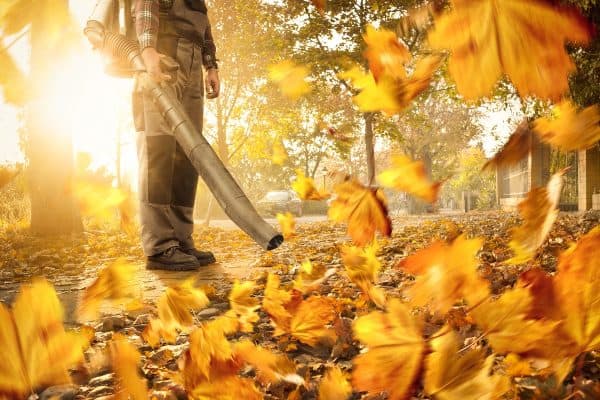When the leaves are dry, they are much lighter than gravel, and you can easily remove them with a leaf vacuum from the gravel regions. But how do we vacuum leaves from rocks? We will share the answer with you in this post since we researched it.
To collect the leaves, turn on the suction setting of your leaf vacuum to its minimum. It would help to test a small area first to ensure the gravel does not shift when vacuuming.
Beautiful as they are in the autumn, fallen leaves can quickly cover your lawn and ruin its aesthetic value. Aside from vacuuming, there are still other ways you can remove all the leaves from the gravel or stones in your landscape.
You can save time and effort in the garden if you know the best techniques to eliminate leaves. Please keep reading if you want to learn them all.
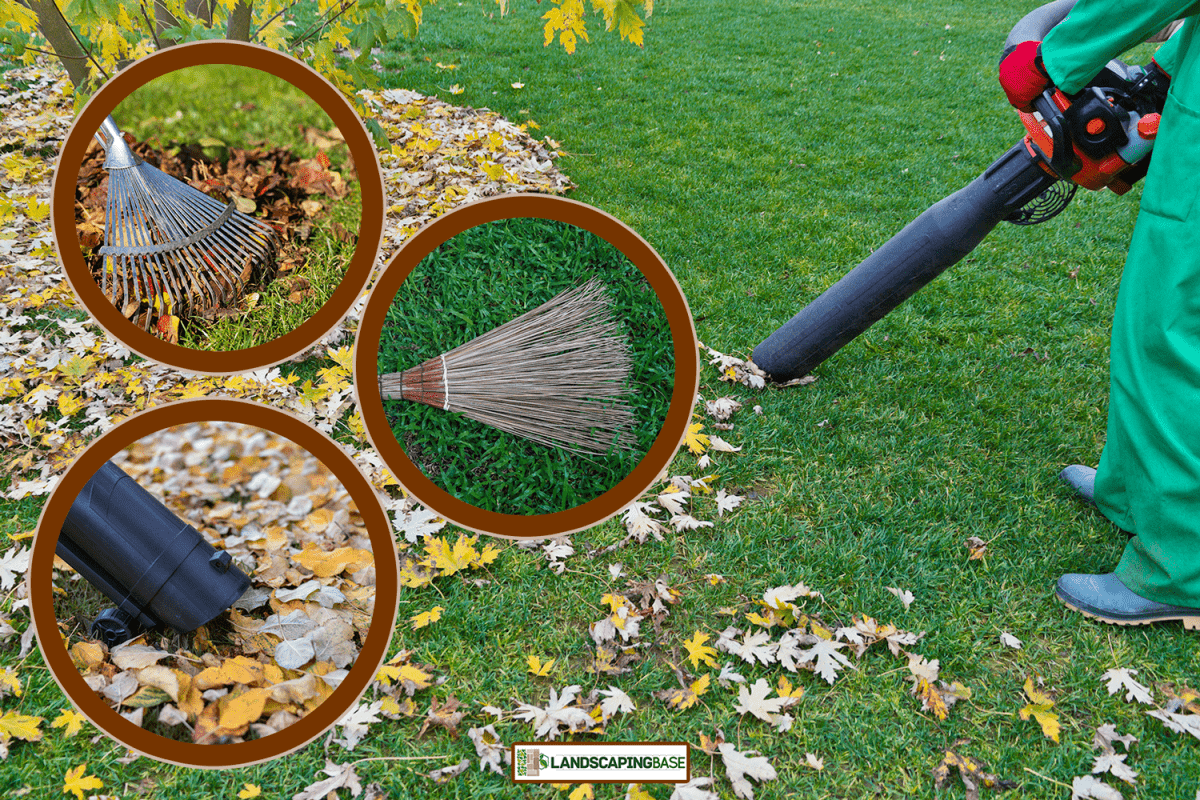
What are the methods to remove leaves from rocks?
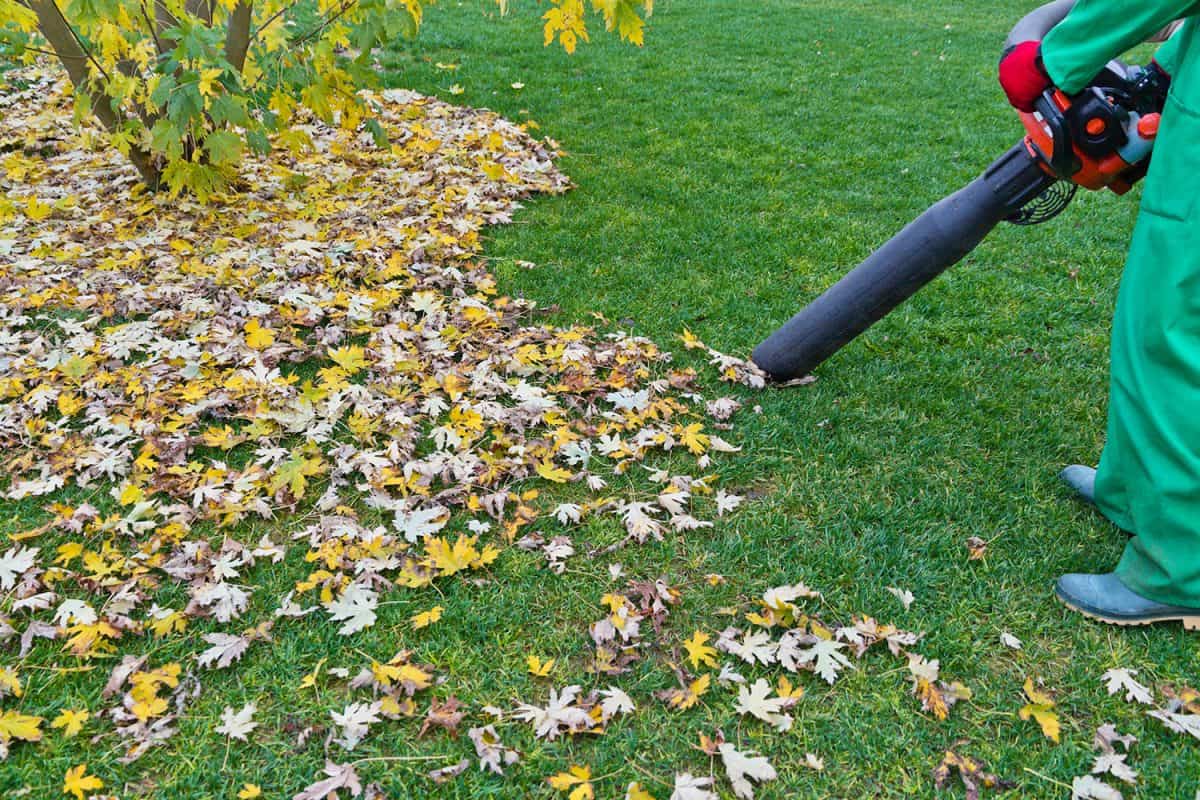
Ridding leaves from ornamental gravel and in between rock beds might not seem like a difficult chore, and in many circumstances, it isn't that difficult with the correct equipment. But you have to approach the job correctly.
We offer some pointers for those who have yet to tackle the task of clearing all those bothersome leaves:
- You should rake around the plants you intend to maintain, not over.
- Maintain a distance of four inches from plants using a vacuum or blower.
- Before raking or blowing leaves, check whether any plants have been buried in the pile and note their spots.
- If you have many leaves piled up in your rock garden, you can smother some of your smaller plants. If you care about your plants, you should search for them by hand in the garden. Using poles or flags to identify plants can ensure that you are not damaging them while removing the debris.
Use A Leaf Vacuum
Either a specialized landscape vacuum or a leaf blower with a vacuum attachment is available. Both enable you to clean the grass by removing the leaves with a single device.
It would be best to wear eye protection, like goggles, even if you're only sucking and not blowing. It is better safe than sorry.
Ensure you fasten the catch bag properly before you begin, and empty it often while you work. Water makes it more challenging to vacuum up leaves and pine needles.
Some leaf blowers include a vacuum feature for collecting leaves once you finish. The leaves could be easily sucked into the connected vacuum bag, making this tool ideal for cleaning leaves off rocks.
Get this leaf blower/vacuum combo with a collection bag on Amazon.
Compared to blowing the leaves off the rocks and onto the grass, where they will have to be cleaned up later, this method is more time and labor efficient.
Whether you have piles of dry leaves in your ornamental rocks or unmanageable wet leaves and pine needles, a leaf vacuum is one of the most effective instruments for removing leaves from rock mulch.
Read: "Will A Leaf Vacuum Pick Up Mulch [Can It Remove Leaves From Mulch?]"
Remove the leaves manually
Manual leaf removal is the simplest method. It is the optimal strategy when dealing with fragile plants. Gloves and a hand rake can make quick work of collecting leaves. No alternatives exist to remove leaves by hand when your rock beds are stuffed with delicate garden plants.
Large hand rakes (or scoops) can help you lift leaf piles; get it on Amazon.
Put on some gloves and use a hand rake to quickly and efficiently clear the yard of fallen leaves. Most of the time, however, you can pick the leaves off the plants by hand and then deal with the rest of the garden differently.
Try this hand rake near small plants; get it on Amazon.
Sifting tiny stones or gravel
You can't get the gravel or pebbles back to their original condition after they've been mixed with dirt and leaves, no matter how often you rake, blow, or vacuum.
When leaves and dirt are mixed up with your gravel or rocks, no amount of raking, leaf blowing, or vacuuming can bring them back to their original state.
Sifting the pebbles to eliminate the tenacious leaves is the best choice here. Here are the measures to take:
- Place a 3-foot sheet of the metal screen on a tarp and place it outside your flower garden.
- Move some of the rocks from your flower garden to the middle of the screen.
- Using your hands, lift the screen and shake it to separate the dirt and pebbles.
- Collect the last of the leaves by hand.
- Put the rocks back where they belong in the flowerbed.
This method is time-inefficient for anything larger than dust. It would be best to reserve this method for gravel and sand.
Try this garden sifter from Amazon.
Use A Leaf blower
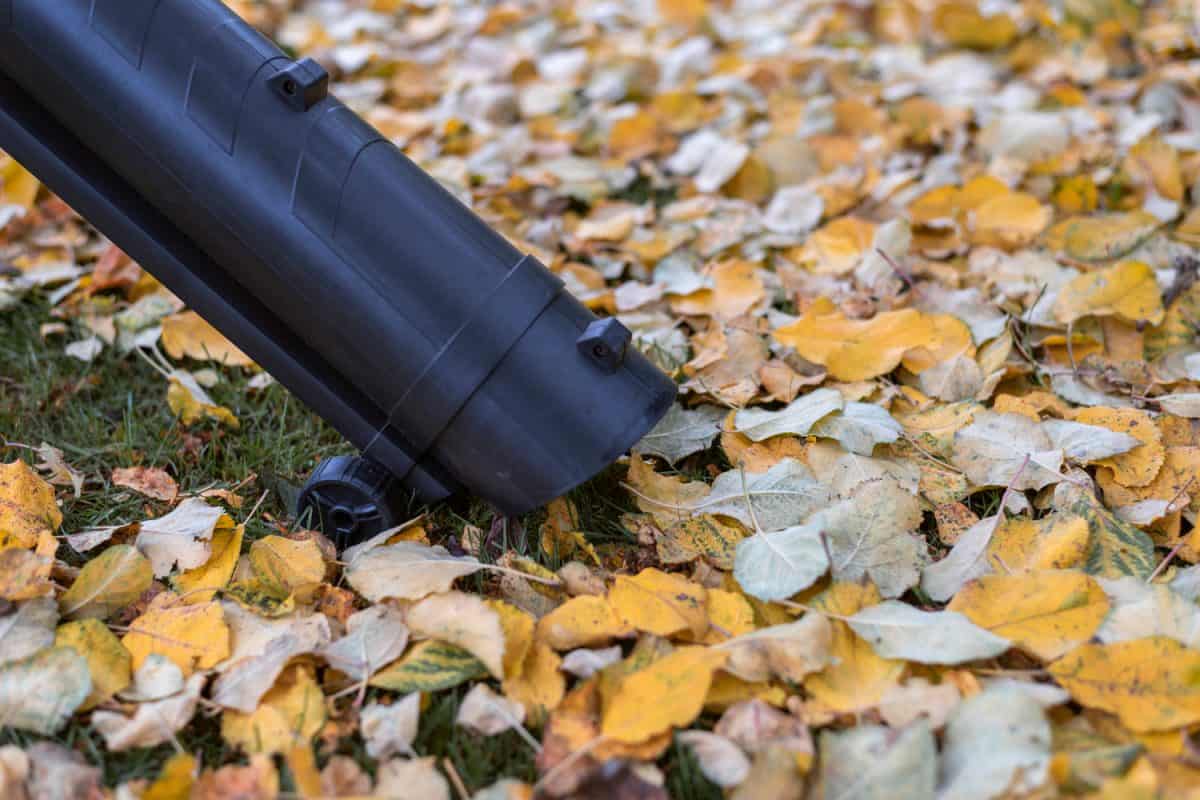
As mentioned, a leaf blower or vacuum is ideal for cleaning leaves off rocks.
Sometimes you need a little more force to get those pesky leaves off your rocks. If you have a blower, you could use it to loosen the leaves stuck between the rocks. However, careful use of a leaf blower is required to prevent damage to valuable plants.
Larger and heavier leaf blowers might cause more damage to your landscape than smaller and lighter leaf vacuums. So, If you're using a leaf blower in the garden, ensure the nozzle is at least four inches away from the plants.
Try a lightweight electric blower from Amazon.
Before you grab the leaf blower, see if you can remove the leaves by hand from around the garden plant. Use them if you observe the plant becoming visibly agitated as you blow leaves across a wider area, like your grass lawn.
Read: "Can I Use A Leaf Blower For Grass Clippings?"
Use A Shop Wet/Dry Vacuum
A regular shop vacuum will do the trick if you don't have access to more advanced landscaping tools, such as a leaf blower.
Because of their powerful suction and lengthy, swiveling hose, you may also use shop vacuums to pick up leaves. It makes it much easier to clear away fallen leaves from rock gardens.
Try this Stanley wet/dry vac from Amazon.
Moreover, using a high-quality shop vacuum, you can remove the leaves stuck in crevices between boulders. Most models of shop vacs have an exhaust port that you may utilize to attach a hose and turn the device into a blower.
A wet/dry vacuum may double as a leaf blower if that's more convenient for you. Rather than attaching the suction hose to the air intake, utilize the exhaust opening.
Indeed, you could swiftly remove leaves from your garden by blowing them away with this approach, but it's only practical for minimal regions. Using a shop vacuum to remove leaves from your entire yard is not feasible.
use the right rake
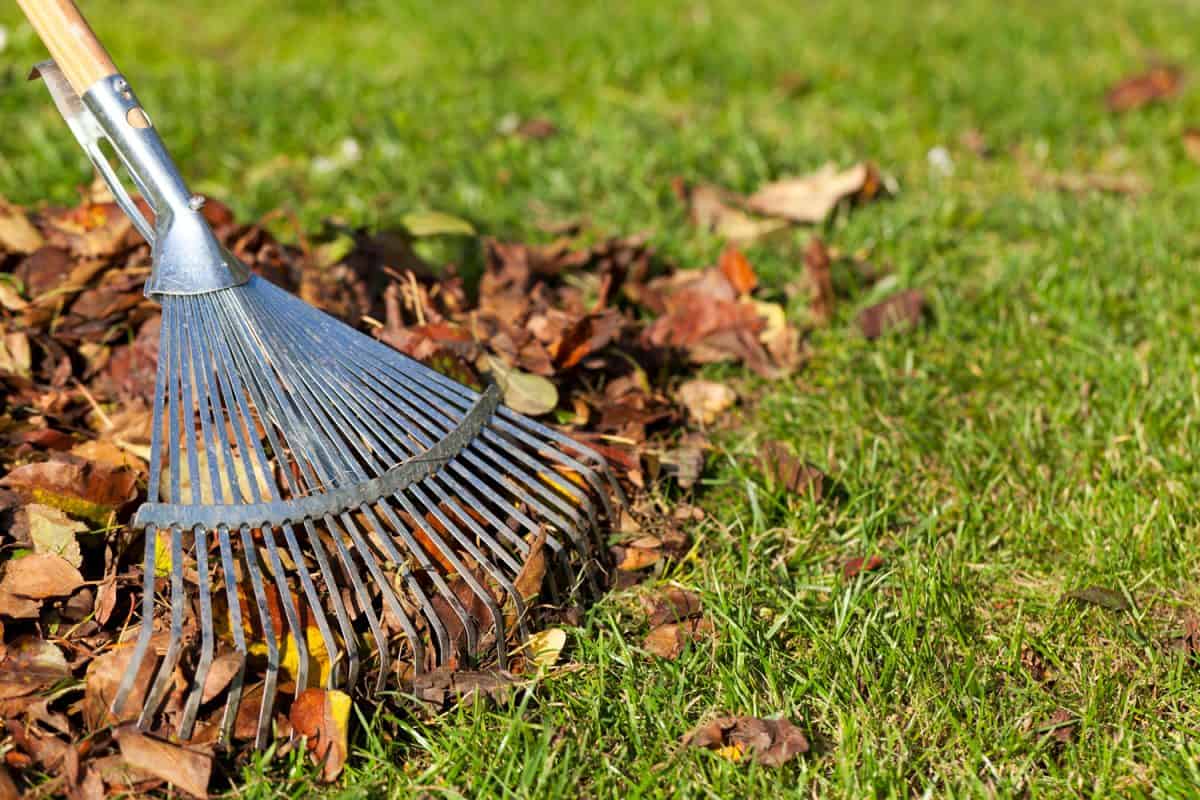
Using the appropriate leaf rake might help remove leaves from rocks. Look for a rake that has tines made of metal that are both thin and flexible. These are the most effective tools for clearing away leaves without causing any harm to the beautiful pebbles you have.
Additionally, you should avoid using a rake with stiff tines since they do not effectively remove leaves but instead shift and disrupt your rocks.
Get this leaf rake with comfort adjust handle on Amazon.
If you need to remove leaves from sections of rock mulch that vary in size, try using a rake that you can adjust to your needs, such as an adjustable leaf rake. A leaf rake has triangle-shaped tines that are springy and constructed of lightweight, flexible metal, springy bamboo, or plastic.
Get this adjustable leaf rake on Amazon.
When clearing the trash from your rock mulch, make sure to avoid tugging the gravel by using a gentle flicking movement toward yourself. When you rake leaves using a rigid rake, the tines will move the pebbles instead of the leaves.
Use a Straw Broom
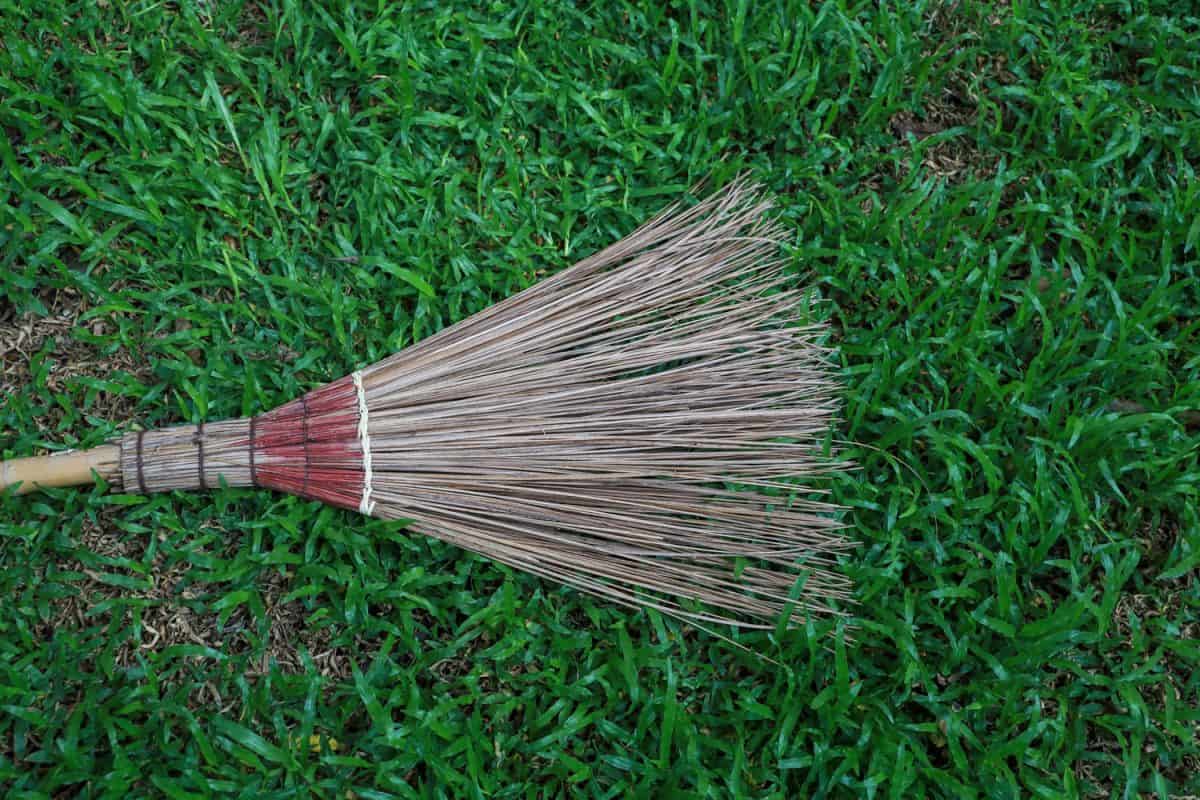
A blower or vacuum might readily move pebbles and leaves in your rock garden, particularly if your rock garden composes of small rocks or gravel.
In this case, a stiff straw broom works fantastically for removing leaves and is superior to other equipment that is purposely made for this situation. You will rake up your garden's leaves, but it won't scatter any pebbles across the yard.
This broom made of straw admirably performs when it comes to removing leaves from around gravel and tiny pebbles.
Get this Amish-made broom on Amazon.
Furthermore, if you have the option, go with a straw broom with an Asian-inspired design. They feature a straw head in the shape of a fan, making them excellent for raking leaves while preventing rock damage.
Try this Asain-design broom from Amazon.
You'll probably scatter lawn ornaments all over the place if you use a Western-style straw broom with a thinner straw head.
What are the benefits of clearing Fallen leaves
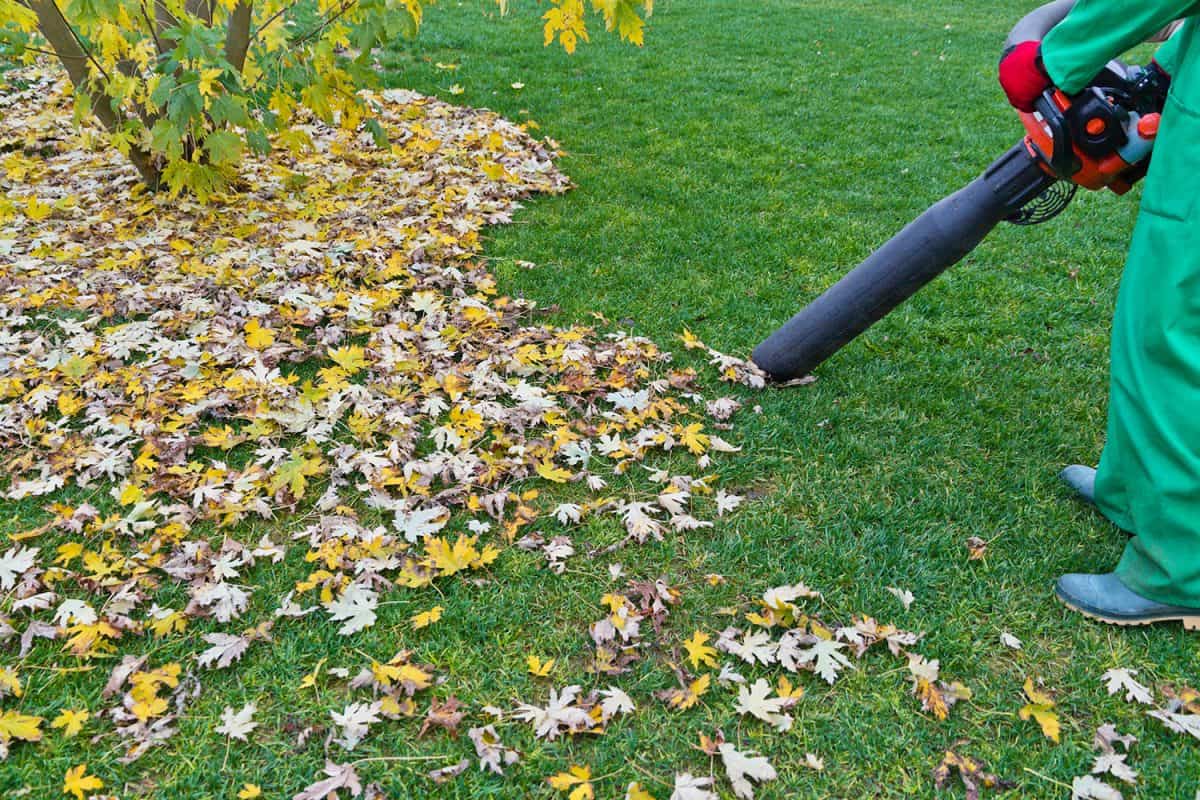
There are several advantages to raking leaves for you and your garden. Simply said, raking leaves will promote grass growth.
Some cool-season grasses, like Kentucky bluegrass, regenerates in the autumn, but a dense blanket of fallen leaves can limit grass sunlight, stunting its development. In order to produce hay and fortify their root systems, cool-season lawn grasses are at their most active during the somewhat chilly fall months.
Even with various grass varieties, you don't need to pick up every errant leaf. Few leaves won't harm your lawn. If you mow once more in the fall, the mower blade will shred any lingering leaves, and you won't even notice them.
Raking the leaves has several advantages, including the following:
- Exercise and fresh air.
- Raking removes dead grass above the soil (thatch).
- Raking lowers disease-carrying leaves on trees and plants.
- Raking helps your property seem tidy.
Summary
Clearing the fallen leaves from your yard is essential. You don't want your property to look messy and dirty because of those stubborn leaves.
We hope you find this post helpful. If you have additional concerns, you can leave a comment below. We'd love to answer you! And please watch out for more posts post coming!

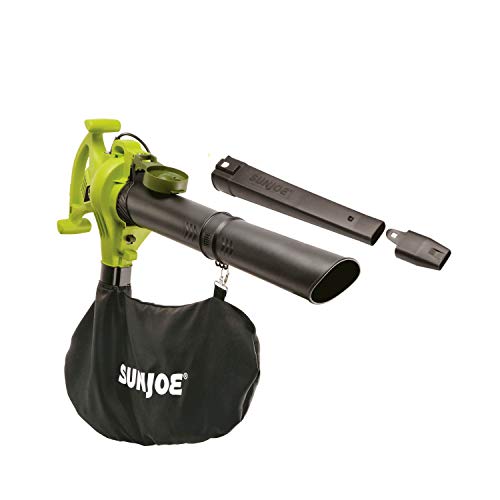









![A man using a portable vacuum to collect dead leaves, Will A Leaf Vacuum Pick Up Mulch? [Can It Remove Leaves From Mulch?]](https://landscapingbase.com/wp-content/uploads/2022/09/Man-using-a-portable-vacuum-to-collect-dead-leaves-600x400.jpg)
